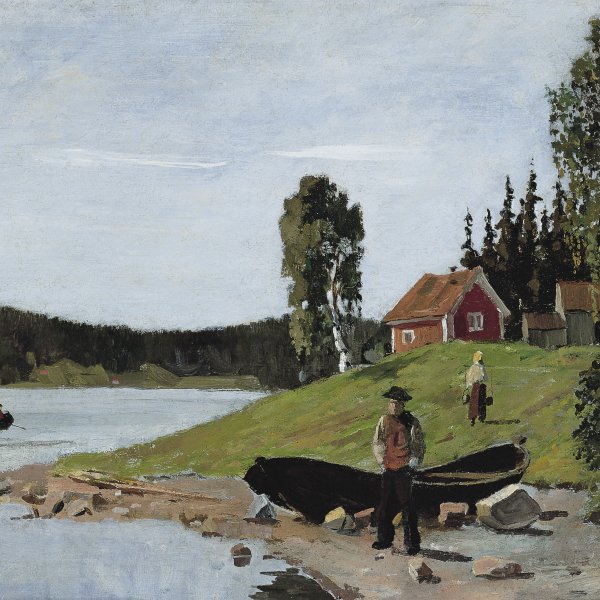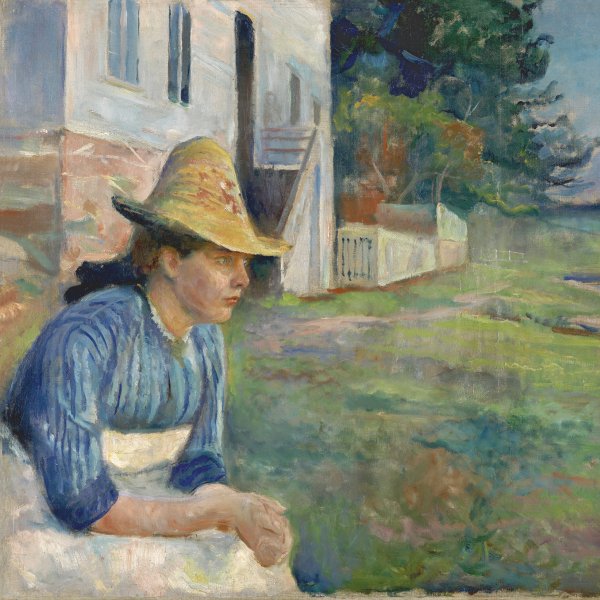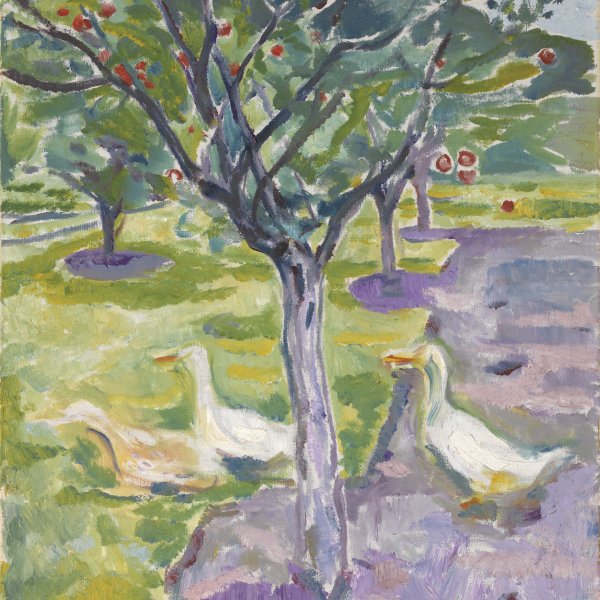Edvard Munch
Løten, 1863-Ekely, 1944
Together with Vincent van Gogh, the Norwegian painter Edvard Munch is regarded as an essential forerunner of German Expressionism. The world portrayed by Munch, an artist who spans two centuries, has been interpreted as a symbol of the fin-de-siècle feeling. Born into a family afflicted by tuberculosis, he received an upbringing based on strict moral principles, in an environment dominated by a bad-tempered father prone to depression. After beginning his engineering studies in Christiania (now Oslo), he enrolled at the Tegneskole in 1881 to train as a painter. Around 1884 he met some of the members of the city’s bohemian circle led by the anarchist writer Hans Jaeger, who advocated a break with bourgeois principles and morals. A work dating from this period is the Sick Girl (Oslo, Nasjonalgalleriet), which was very harshly criticised when shown in 1886. From 1888 onwards he spent his summers in Åsgårdstrand, in Christiania Fjord, where he eventually bought a house.
In 1889 Munch was awarded a travelling scholarship that enabled him to gain firsthand knowledge of trends in contemporary French painting. During the three years he lived in Paris he was particularly attracted to the Post- Impressionist painters and Synthetism. His work shifted gradually towards a very personal type of Symbolism that was marked by his views on life and centred on the themes of death, sex, women and his mental crises. In 1892 he exhibited at the Verein Berliner Künstler in Berlin, but the show had to be closed a week after opening. The scandal it triggered caused Munch’s fame to grow in Germany and led to the formation of an association of artists in protest, the germ of the Berlin Secession. Edvard Munch later settled in Germany, where he showed his work on many occasions. There he frequented the group of bohemian intellectuals who met at the Zum Schwarzen Ferkel tavern, among them Stanislas Przybyszewski and August Strindberg.
Munch suffered various nervous breakdowns, which were sometimes aggravated by his problem with alcohol. In 1908 he had to be committed to Dr Jacobsen’s psychiatric clinic in Copenhagen, and after recovering established himself in Norway. From 1916 until his death he led a solitary life practically in retirement from the world in Ekely. When he died the city of Oslo inherited his works, which have been on show at the Munch-Museet since 1963.
In 1889 Munch was awarded a travelling scholarship that enabled him to gain firsthand knowledge of trends in contemporary French painting. During the three years he lived in Paris he was particularly attracted to the Post- Impressionist painters and Synthetism. His work shifted gradually towards a very personal type of Symbolism that was marked by his views on life and centred on the themes of death, sex, women and his mental crises. In 1892 he exhibited at the Verein Berliner Künstler in Berlin, but the show had to be closed a week after opening. The scandal it triggered caused Munch’s fame to grow in Germany and led to the formation of an association of artists in protest, the germ of the Berlin Secession. Edvard Munch later settled in Germany, where he showed his work on many occasions. There he frequented the group of bohemian intellectuals who met at the Zum Schwarzen Ferkel tavern, among them Stanislas Przybyszewski and August Strindberg.
Munch suffered various nervous breakdowns, which were sometimes aggravated by his problem with alcohol. In 1908 he had to be committed to Dr Jacobsen’s psychiatric clinic in Copenhagen, and after recovering established himself in Norway. From 1916 until his death he led a solitary life practically in retirement from the world in Ekely. When he died the city of Oslo inherited his works, which have been on show at the Munch-Museet since 1963.







